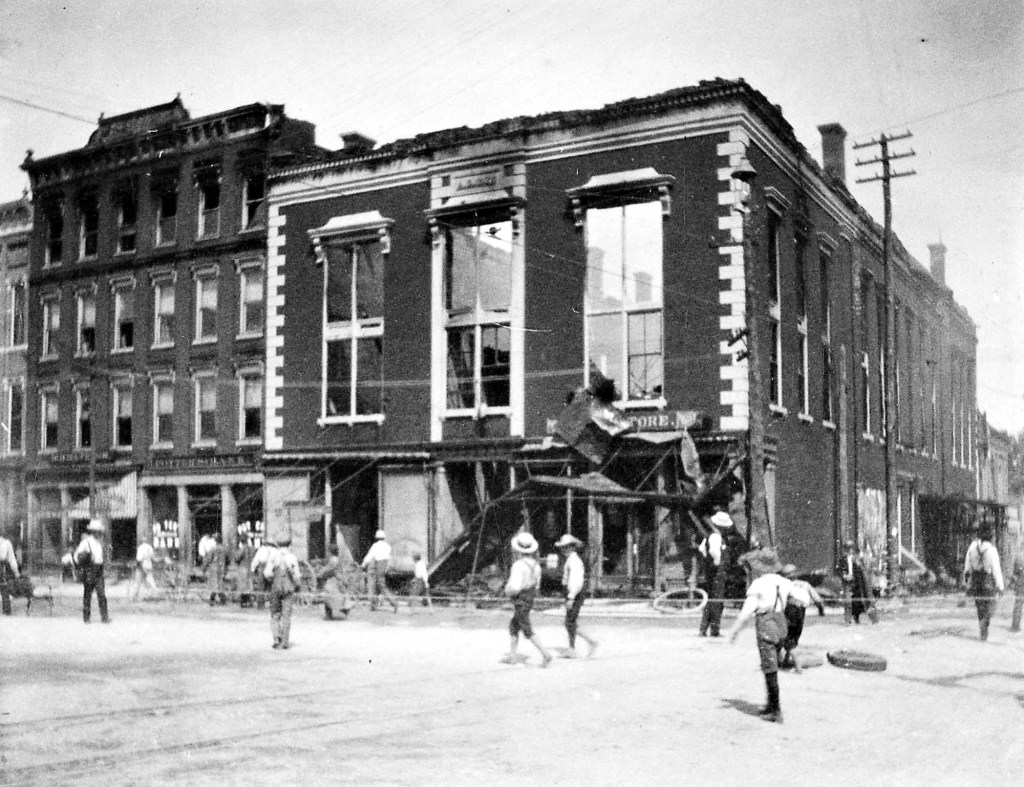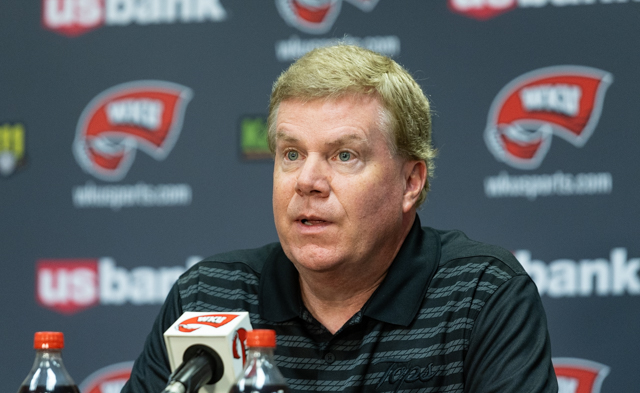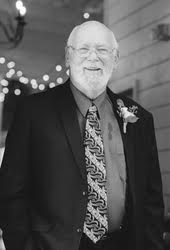A taste of the arts in town
Published 4:45 pm Thursday, September 13, 2012

- Potter Opera House fire July 3, 1898. (Photo Courtesy of Special Collections-WKU)
An opera house, literary clubs, parties and picnics – Bowling Green has seen of a variety of cultural activities in the past 200 years.
There was Odean Hall, a remodeled building turned opera house that was one of many buildings that burned at College Street and Main Avenue on July 3, 1899. The Park City Daily News said, “The opera house had been elegantly furnished and presented an appearance which was a pride to everyone in the city. It will be rebuilt at the earliest date possible.”
Trending
In the early 20th century, many businesses shut down for Independence Day just as they do today. In the July 3, 1925, edition of the Daily News, hundreds were expected to attend a celebration at Beech Bend given by The Low Twelve Club. The all-day picnic would include contests, races, dancing and “nearly every form of amusement.” The Capitol Arts Center showed movies, including “The White Monkey,” featuring “Beautiful Barbara LaMarr.”
The 1930s included wrestling at the Armory. Even women took part. On April 6, 1937, a Daily News story told of an exhibition match between 22-year-old Miss Mildred Burke, a World Champion Woman Wrestler, and Miss Betty Lee of New York City.
In the 1940s, there was Wayne King the Waltz King on WKCT, sponsored by Bowling Green Bank and Trust. There were also Community Concerts Association concerts at Western Kentucky University’s Van Meter Auditorium. The 1948-49 season featured acts such as The Columbus Boy Choir of 40 Voices, The Philharmonic Piano Co. and soprano Rose Bampton of the Metropolitan Opera Co.
Today, Bowling Green has grown in the number of cultural activities available. Here are just a few that are still available.
Public Theatre of Kentucky
The Public Theatre of Kentucky at the Phoenix began as the Alley Playhouse in 1963. Under the direction of Dr. Russell H. Miller and with support from WKU, the warehouse on Morris Alley was named after the Houston’s Alley Theatre. According to PTK’s website at www.ptkbg.org, the Alley Playhouse stage was “in the round” as 135 canvas director chairs served as seating for patrons. After Miller died in 1969, the theater closed and became a warehouse again.
Trending
WKU graduate Marci Woodruff, after furthering her education, became familiar with small professional theater. She and three young actors moved to Bowling Green and founded PTK in 1987.
PTK held performances at the Capitol Arts Center in the 1980s and early 1990s. Dr. Whit Combs, Woodruff’s friend and former mentor, supported and advised the project.
For the 1993-94 season, the renovated Phoenix opened its doors to new audiences. It was also the first season without Woodruff. A board of directors maintained the theater with an artistic director. Combs took over many of the responsibilities. When he died in 1996, The Whit Combs auditorium in the Phoenix Theatre was dedicated in his memory.
Various artistic directors have taken the reins, including Mike Thomas, Mark Funk, Alexis Combs McCoy and Delia Brown. The theater has also has expanded its programming over the years with the Sunburst Youth Theatre, the After Hours Series and New Play Reading Series.
Fountain Square Players
In November 1964, the Alley Playhouse – which later became Public Theatre of Kentucky’s Phoenix Theatre – had its first production, “Bell, Book and Candle.” The Alley Players were the successors of the Bowling Green Community Players. Eventually, the group disbanded.
In 1977, Whit Combs and Bill Leonard of WKU’s Department of Theatre set out to bring the defunct Alley Players back as the Warren County Community Theatre. WKU provided direction, funding and space and the community provided actors and enthusiasm. In 1978, the Warren County Community Theatre became the Fountain Square Players.
According to the theater group’s website at www.fountainsquareplayers
.org, the first three full seasons of plays were performed at WKU theatres, the Warren County Courthouse, State Street United Methodist Church, two different stores in the vacant Bowling Green Mall and a motel. In April 1981, the Capitol Arts Center allowed the group to perform “Little Mary Sunshine” in its nearly renovated building. The group continued to perform there in the 1981-82 season.
As the organization grew, there was a need for more space for set construction material. After years of storing items in board members’ garages and borrowed space, the group invested in a shop and studio at 313 State St.
In August 1993, PTK began letting FSP use its theater. The group has presented several plays at the Phoenix.
World’s Greatest Art Tour and Sale, the Bowling Green Gallery Hop and VSA Kentucky
These two art shows feature various mediums of work by local artists.
Started by late artist and owner of Memphis Marsha’s Art Gallery and Classes Marsha Heidbrink more than 16 years ago, the World’s Greatest Studio Tour and Art Sale has sites in which people can go visit artists, learn about their work and sometimes see them in the creative process. Proceeds from sales go to support the visual arts.
At the Bowling Green Gallery Hop, people can go among galleries to see new and existing exhibits and ask about mediums that are displayed. The event, which started in 2008 and co-chaired by Heidbrink and Arlene’s Art Studio and Gallery owner Arlene Moorman, has a season that often runs from March to November. For more information and locations, visit www.thebowlinggreengalleryhop.com.
VSA Kentucky is a nonprofit organization that provides inclusive arts and education for children, youths and adults with disabilities and professional development for artists and teachers in schools and communities. According the VSA website at www.vsartsky.org, the Kentucky organization was founded by Ambassador Jean Kennedy Smith. The organization was incorporated in 1997 and has helped thousands of participants with disabilities. The Kentucky branch is an affiliate of the headquarters in Washington, D.C. The local branch is in the process of moving to the Capitol Arts Center, 416 E. Main Ave.
Concerts in the Park
For 33 years, the BB&T Concerts in the Park Series, organized by the Downtown Redevelopment Authority, has been entertaining hundreds of people each season with different genres of music, dance, children’s activities and vendors. The season runs each Wednesday in June and each Wednesday and Friday in July and August.
The Symphony at WKU
The Symphony at WKU celebrated its 100th anniversary in 2008. A cooperative venture between Western Kentucky University’s music department and The Symphony at WKU Association, the orchestra is composed of WKU students and professional musicians from the surrounding area. Its purpose is to provide opportunity for musicians, students and professionals to perform in an orchestral setting and to contribute to the cultural enrichment and enjoyment of its audiences.
According to The Symphony’s website at www.bgwso.org, which has a history by Kentucky Library Special Collections Professor Jonathan Jeffrey, the musical organization was formed in 1908 and grew out of Western Kentucky State Normal School’s four music classes: Common School Music – Methods & Training, Sight Singing, Piano and Voice. Faculty members W.L. Gebhart and Irene Russell encouraged students to perform in various performance ensembles, including the Normal School Orchestra. The group may have not performed for an audience more than once a semester.
The orchestra became more integral to the school and community when Franz J. Strahm was hired as the dean of the School of Music in 1910. There were orchestra performances throughout the school years, musical celebrities on campus and an annual May Festival at Van Meter Auditorium that drew more than 2,000 listeners.
The Western Symphony Orchestra almost became extinct because of budget constraints in the early 1980s. People were supporting the Bowling Green Community Concert Association, which helped bring nationally recognized musical performers to the city. Some citizens banded together to help support the symphony financially and attended. The “premier concert” of the Bowling Green Western Symphony Orchestra was performed in October 1982 under the direction of Gary Dilworth at the renovated Capitol Arts Center.
The orchestra became incorporated in 1986 as a nonprofit corporation and has become The Symphony at WKU. The conductor is Dr. William Scott.
Orchestra Kentucky
Orchestra Kentucky music director and conductor Jeff Reed thought up the idea of a new orchestra in June 2000 while walking with Michael Thurman. The purpose was to create a completely professional orchestra that would offer local and regional musicians playing opportunities.
Reed called people whom he thought would be interested in the project: Dr. Charles Smith, flute and music theory professor at WKU, Helen and Greg Motter, who have extensive background in performing, and Duncan McKenzie, who worked on the Southern Kentucky Concert Band board and was former executive director of the Capitol Arts Alliance. They got together for an initial meeting. Pam Thurman, music teacher, soon joined the group and has remained the music arranger for the orchestra. Chuck Smith’s wife, Dr. Janet Bass Smith, joined as a board member for the organization. The Motters brought in Evan Walters, who had helped begin the Seaside Symphony in Salem, Mass.
The group was then known as the Bowling Green Chamber Orchestra and debuted in September 2000 at Christ Episcopal Church. The concerts were held at various venues during the first season.
As the orchestra grew, the orchestra began to expand its program with concerts such as “Beatlemadness.” In 2004, Darrell Edwards was hired as executive director, followed by Diane Crawley as office manager, Jennay Keelin as administrative assistant, Heather Higgins as marketing director and Duncan McKenzie as director of sales.
Bowling Green Chamber Orchestra has been renamed Orchestra Kentucky in reflection of its efforts to reach audiences across the state. More than 10,000 people buy tickets for the shows each year.
“The opera house had been elegantly furnished and presented an appearance which was a pride to everyone in the city. It will be rebuilt at the earliest date possible.”
In 1899 Park City Daily News article After fire burned downtown buildings






